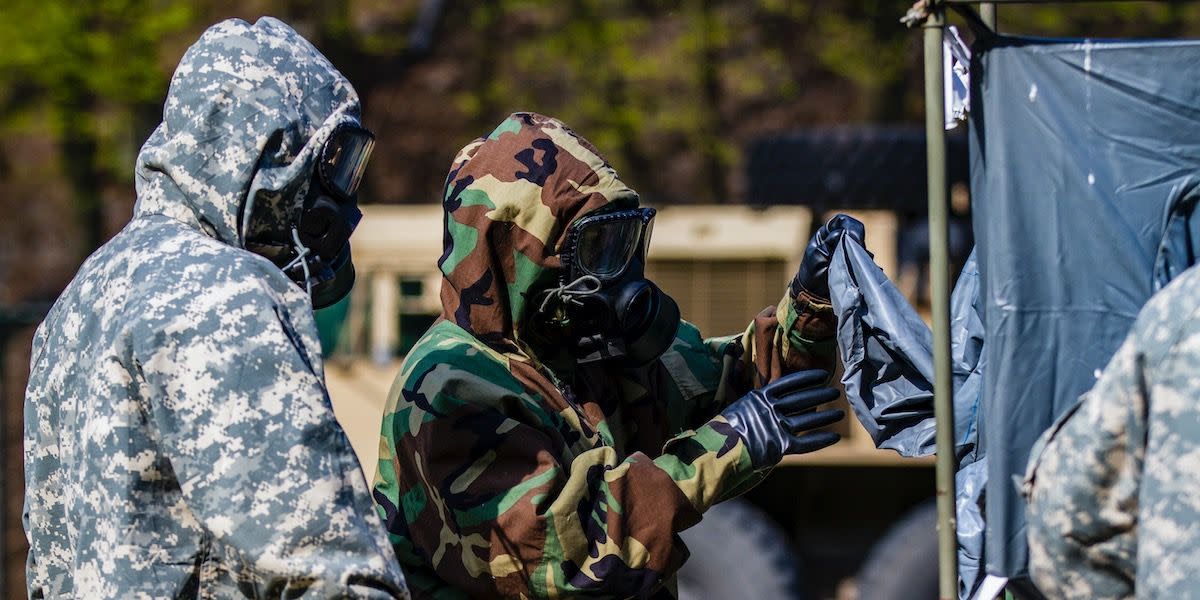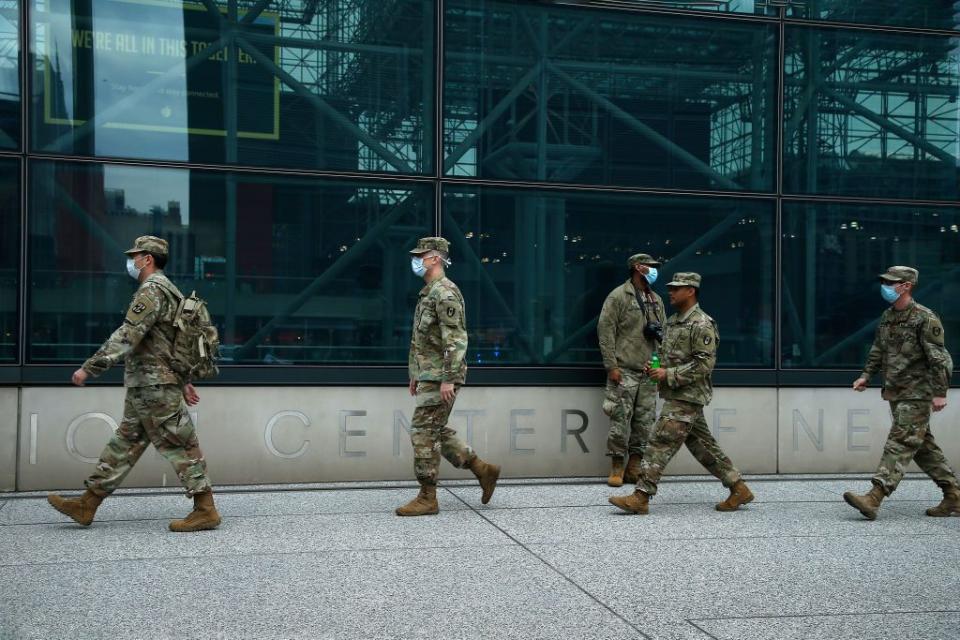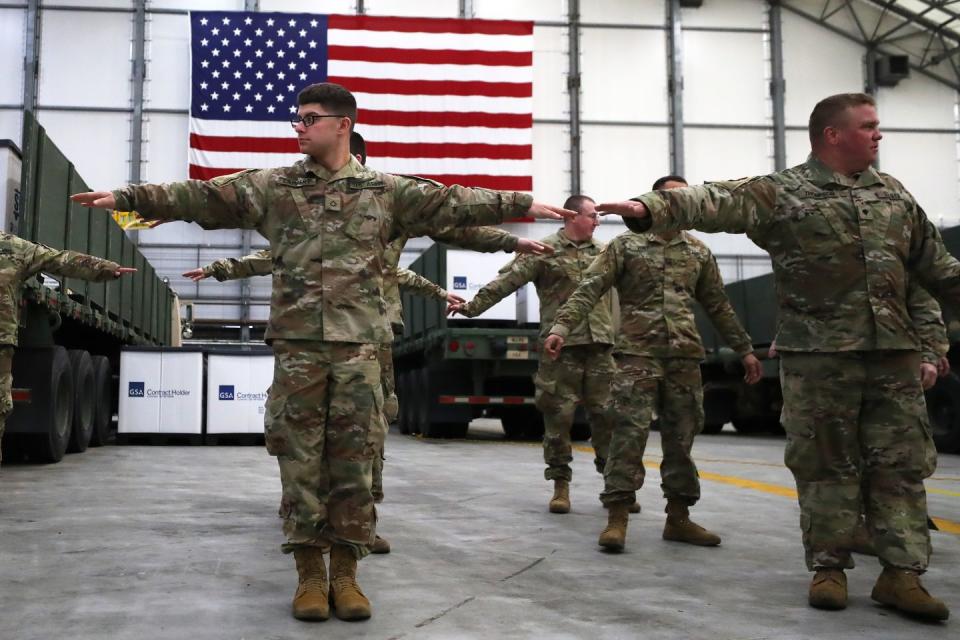A 2017 Pentagon Memo Foretold Today's Pandemic With Creepy Accuracy

A 2017 NORTHCOM report correctly anticipated many aspects of the 2020 novel coronavirus pandemic.
The report predicted the pandemic could seriously affect American society for up to two years and incapacitate up to 40 percent of the workforce.
The report also warned that terrorists and other groups could take advantage of the confusion to stage attacks.
A 2017 report created by U.S. Northern Command warned that a future pandemic could have grave consequences for the military and the entire nation. The report warned that a “novel respiratory disease” could spread worldwide, seriously affecting American society and the economy for up to two years. The report also predicts global instability resulting in dramatic social disruptions, terrorism, and state aggression.

The document, known as Branch Plan 3650, was first revealed by The Nation and uploaded online. It was meant to provide planning guidance to NORTHCOM personnel responding to an “operationally significant infectious disease outbreak.” It outlines different types of outbreaks, from terrorism to the kind of “biological spillover” from Chinese wet markets that authorities believe created COVID-19. Outlining the threat, Branch Plan 3650 inadvertently predicts with uncanny precision the problem Chinese authorities faced in the early days of the epidemic in Wuhan:
Unlike chemical and radiological hazards, biological incidents may take months to develop, and with certain causative bacteria and viruses may continue to spread from person-to-person. Also, there are limited detection/warning capabilities for biologicals which means that an outbreak/attack can go unrecognized and continue to spread before a clinical diagnosis is made. This will be exacerbated if there are limited or no assays by which to identify the organism and if the symptoms mimic naturally occurring endemic outbreaks (e.g., seasonal flu.)
As of April 7th, 2020, the Johns Hopkins Coronavirus Resource Center counts 1.4 million cases of COVID-19 worldwide since the start of the outbreak, with cases in the U.S. now at 400,000. The site reports 82,145 deaths globally, with 12,722 deaths recorded in the U.S. alone.

The report covers two major missions NORTHCOM should prepare for: responding to a pandemic domestically, including supporting civilian authorities, and protecting NORTHCOM forces that carry out the command’s traditional missions such as homeland defense and assisting allies. The report says NORTHCOM’s greatest vulnerability is its people, for whom the outbreak could cause absenteeism, with sick personnel adding to the burden of what it believes will be a stressed health care system.
The report makes plenty of correct calls, identifying the “most likely and significant threat” as a “novel respiratory disease, particularly a novel respiratory disease.” The report says the key to fighting it is in countering its ability to “spread from the point of emergence.” It goes on to recommend several solutions, including, “flu shots, washing hands frequently, cough etiquette, and social distancing.”

NORTHCOM paints what is at times a dire picture. “The recovery from a biological incident may span months or even years based on the nature of the biological and its ability to transmit.” It warns that a disease could impact the command’s “operating environment”—that is, the entire nation itself—for up to 24 months. The report doesn’t delve into estimates of mortality rates and dangers to the economy, but it does warn that a “disease of operational significance may create an environmental and global disaster (pandemic) with the potential of incapacitating 40% of the overall workforce.”

Now that the U.S. is actually in the grips of a pandemic, the report has one final warning. “The (Defense Intelligence Agency) assesses that a pandemic...will give rise to political, social, and economic instabilities that could, in turn, lead to opportunistic aggression, increased terrorist activity, and dramatic social change, especially when combined with morbidity and mortality.”
Examples could include aggression by North Korea against the U.S., Russian moves against Ukraine, a new terrorism campaign by ISIS or Al Qaeda, or other events.
Under normal circumstances Branch Plan 3650 would seem like a dry contingency planning document outlining an event that seems unlikely at best. Today, as the U.S. grapples with the unfolding tragedy of the COVID-19 pandemic it seems incredibly prescient. While the plan doesn’t offer a way forward, it does give some comfort in chaotic times that someone, somewhere out there nailed the prediction.
The rest is up to us.
You Might Also Like

